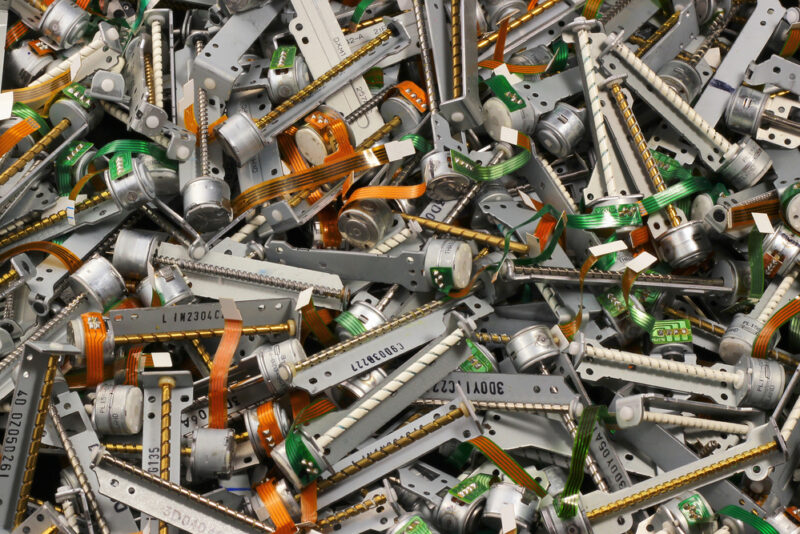You might have heard that cryptocurrency, in general, is bad for the environment, but you also might be wondering how or why that is the case? The answer here is because it creates a huge carbon footprint during the mining process, including the use of electricity, but there is more. Right now, full attention is being put on the e-waste that Bitcoin mining creates.
A journal, called Resources, Conservation, and Recycling, has recently released a new study. It takes a look at how much e-waste a Bitcoin, which is the most common type of cryptos to trade, generates every year.
Because most of the Bitcoin mining devices have such a short lifespan, such as ASIC computer chips that are highly specialized to only mine crypto, they quickly turn to waste after being used.
Additionally, technology is getting better all of the time, and the chips used to mine Bitcoin and other crypto is constantly improving. For instance, the ASIC chips are always being replaced for those that are more powerful because it takes so much power to mine Bitcoin and other cryptocurrency. In general, each chip is only used for a little over a year. Because of this, as you might imagine, this creates so much e-waste.
How Much E-Waste is Created?
The amount of e-waste that is created is really astonishing. This study shows that when you take a look at the entire Bitcoin network, you see that there is approximately 30.7 metric kilotons of e-waste each year. How much is this, though? It’s almost the same as the e-waste that is produced by the Netherlands.
What’s even more confusing is that most people don’t know how much a kiloton is. Well, it’s more than 2.2 million pounds. That’s a lot of waste, right? But imagine this as e-waste. When we break it down even further, we can see that each Bitcoin trade generates approximately 282 grams of e-waste, which is just over a half a pound. In 2020 alone, there were over 112 million Bitcoin transactions…which creates a ton of waste.
To further put this into perspective of how much waste this is, each transaction creates as much waste as the weight of an iPhone Mini…so the e-waste is equivalent to throwing out millions upon millions of these phones each year.
…but, we can take it further. On top of this general waste, e-waste, in general, often releases things like heavy metals and toxic chemicals into the soil, and if you don’t recycle this e-waste correctly, it can further cause water and air pollution.
Can We Stop It?
If you are concerned with the environment, you might be wondering if we can reverse this, or at least eliminate the amount of e-waste we are creating.
In theory, these ASIC chips could be used again if the price of Bitcoin, and the profits, rise. However, there are a ton of barriers that stop crypto miners from re-using them again.
One of the factors that stop this from happening is the cost of storing the hardware. Afterall, you need a place to store these chips until you can re-use them. Additionally, history shows us that the longer you store these Bitcoin mining devices, the less likely it is that they will ever be profitable.
What could happen here is that things could only get worse, and they could get worse really quickly. It all depends on what Bitcoin is trading at. When we high that peak price of over $60,000 per Bitcoin in 2021, the e-waste created was more than 64.4 metric kilotons.
Essentially, we would have to totally change the way we are mining to fix this problem, and that doesn’t seem to be something that would happen any time soon.
WeInvests is a financial portal-based research agency. We do our utmost best to offer reliable and unbiased information about crypto, finance, trading and stocks. However, we do not offer financial advice and users should always carry out their own research.
Read More









